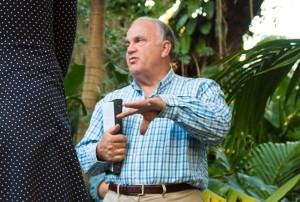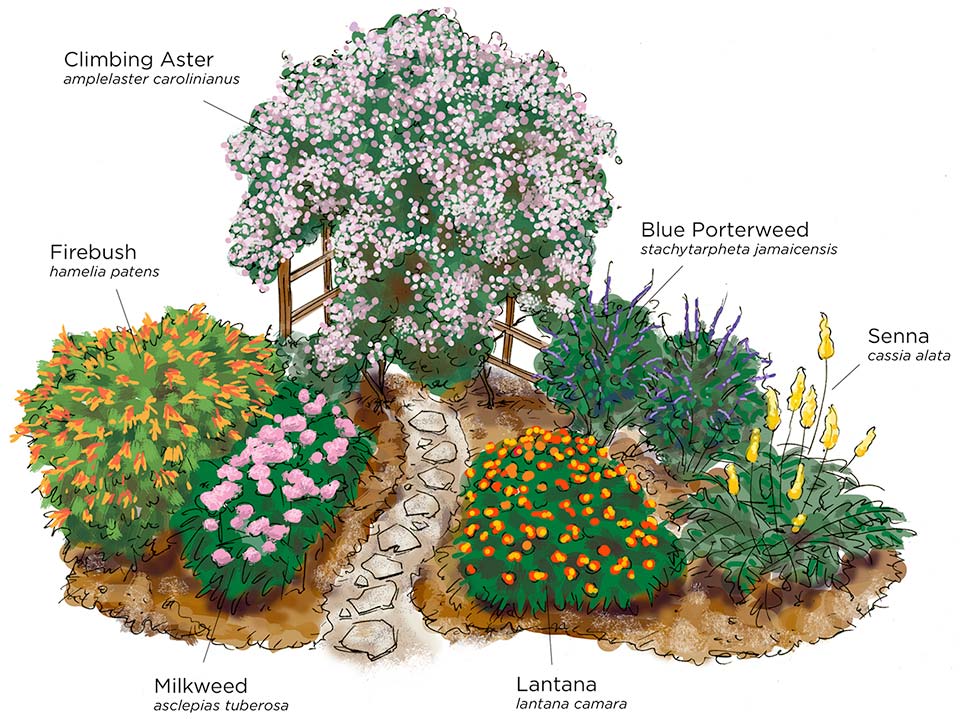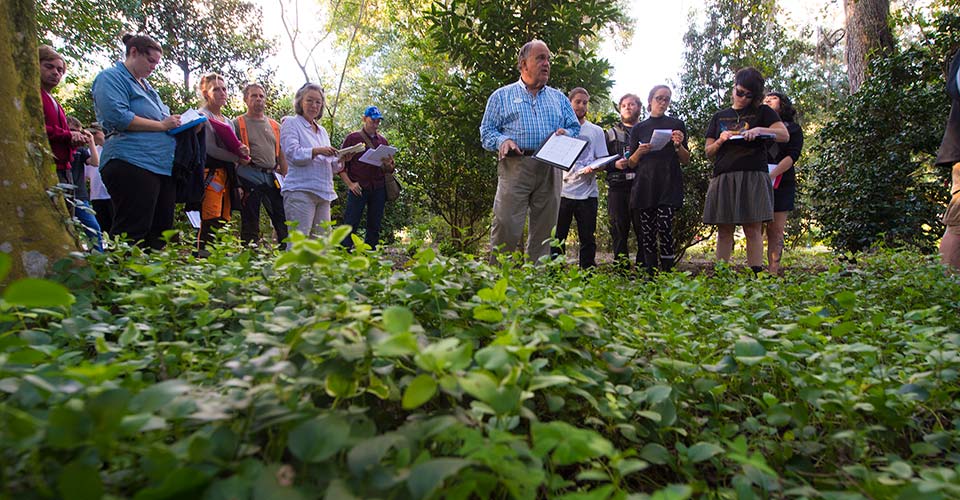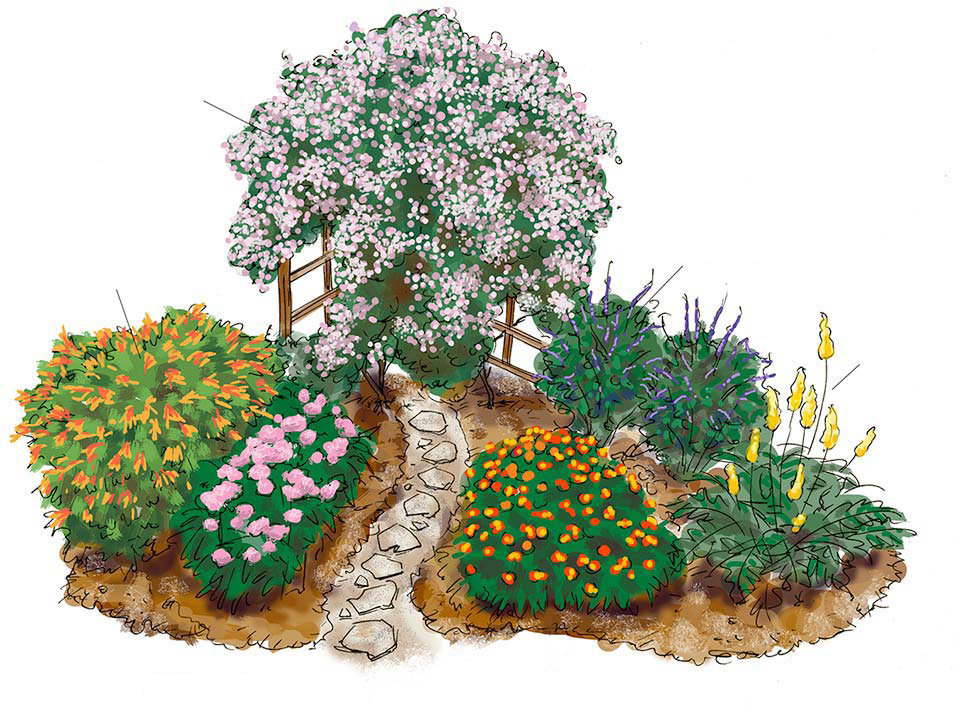Choose a location that gets full sun. Most adult butterflies prefer to feed in sunshine. Central Florida’s most common butterflies are monarchs, white peacocks, orange-barred sulphurs, Gulf fritillaries and several varieties of swallowtails. Select native plants that grow naturally in Florida for your garden. Many butterflies and native plants have evolved by relying on each other to survive and reproduce. Examples include Senna, Native Lantana, Blue Porterweed, Firebush, Climbing Aster and Milkweed. Plant larval host plants, such as Senna, and adult nectar plants, such as Climbing Aster, to accommodate butterflies at all stages of their lives. Nectar plants can feed many butterfly species, but larval plants must be matched to particular species. You can learn more about tailoring host plants to larvae at a Leu Gardens butterfly garden class, or on the Web. A good place to start is the North American Butterfly Association’s website. Select only larval host plants that have not been treated with pesticides. In your own garden, use pesticides sparingly, if at all. Plant shrubs such as Native Lantana or Firebush to protect caterpillars and butterflies from wind and predators. Choose plants that bloom at different times so that butterflies will have a continuous source of nectar. Water the plants sufficiently to get them established, depending on when you start your garden. During Central Florida’s rainy summers, you may not need to water them. Some plants concentrate their roots in the top six inches of soil, others in the top six to 12. Stick your finger into the soil, and if you feel moisture to a depth of six or 12 inches, there’s no need to water. If the soil is dry, the plant is thirsty. Florida is home to a number of butterfly sanctuaries, offering a glimpse of both native and exotic species—while all foster engagement with unique and ever-changing butterfly ecosystems. Plan a day trip to one of these living exhibits: Butterfly World 3600 W. Sample Road 954-977-4400 Florida Museum of Natural History 3215 Hull Road 352-846-2000 Video courtesy of Leu Gardens.
Robert Bowden, Executive Director of Orlando’s Leu Gardens, also teaches at Valencia College.
A Central Florida Butterfly Garden Visualized

Local Butterfly Gardens on Display
South Florida:
(Largest butterfly house in world)
Coconut Creek, FL 33073North Florida:
University of Florida Cultural Plaza
Gainesville, FL 32611-2710A Visual Tour of Leu Gardens

Robert Bowden has taught ornamental horticulture at Valencia College for four years. Students in his class can rest assured that they’re getting an instructor who’s dedicated to his subject: Since 1994 Bowden has been the executive director of Orlando’s 50-acre Harry P. Leu Gardens. He’s also written several gardening books, including “Florida Fruit and Vegetable Gardening: Plant, Grow and Harvest the Best Edibles.”
Plant descriptions sources: South Florida Plant Guide and Floridata.


